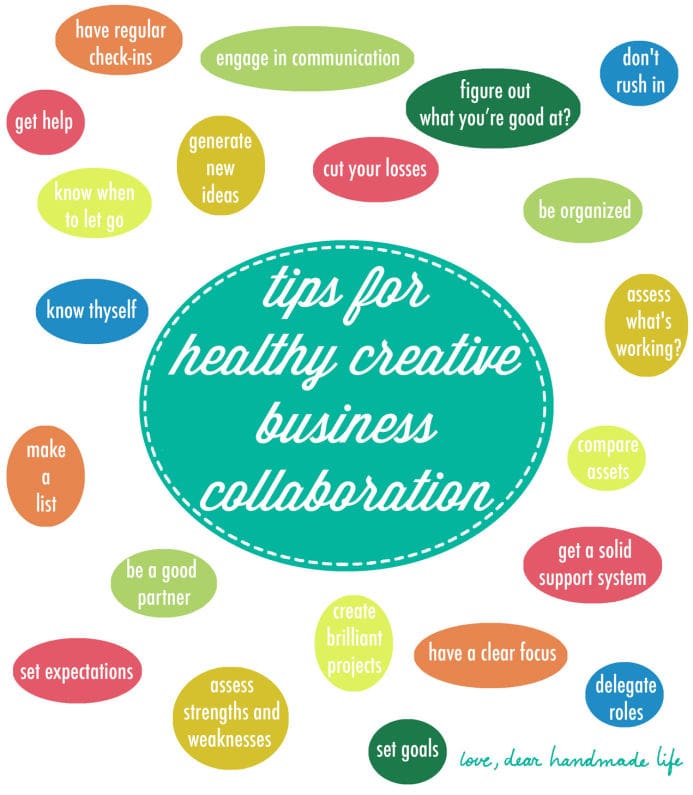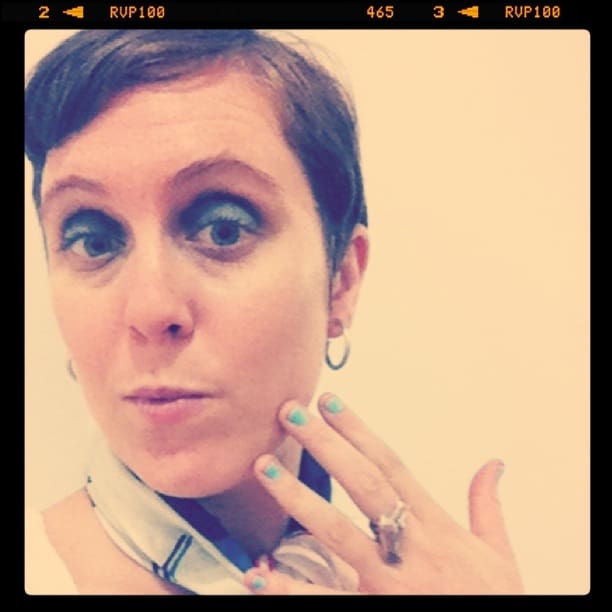Four steps for healthy, creative business collaboration
Like many creative people, I both love and loathe working alone. I often feel I want to pursue my singular creative vision, but also feel strongly that my vision and what I can create is stronger when I work with other, like-minded, people who can bring a variety of perspectives and ideas to mine.
As you start ramping up your planning and events for 2015, making new work for upcoming fairs and sales, or brushing up on your business skills to start accomplishing your goals for the new year you may be thinking about working with someone else to bring new perspective to your work or to realize an ambitious project. I’m always excited to take on new ideas and projects and explore what collaboration can bring. However, in the past I have had a tendency to get in over my head and underestimate how much work and communication a collective project will take. Below are some tips for building and maintaining healthy collaborations based on my experience from organizing events, freelance writing, and playing in bands for over 15 years.
1. To be a good partner, know thyself
What are your strengths and weaknesses? What do you love to do and what can you not stand? To understand how working with someone else to help your business, it’s helpful make a list of five things that you are really good at, both related to your craft and the running of your business, and five things that you feel you would be better off delegating or at least getting help on from someone else.
If you know the person that you are thinking of collaborating with well, you could each make a list and then compare. No matter what, engage your partner in a conversation about both of your strengths and weaknesses and ask about what they are looking forward to attaining from the collaboration and what they think will be challenging.
2. Set clear expectations and roles
What do you want to achieve from your collaboration? How will working together benefit all people involved, not just yourself? Before rushing into working together set clear goals for what you want to achieve together (for advice on goal setting check out my past column on the topic here) and the tasks each person will contribute towards attaining that goal.
Be clear about how the collaboration will work. Is one person the “leader” who assigns tasks and manages the overall vision, or is it a true collaboration with each person involved contributing equally? Many collaborations I have been a part of, hit a snag when the leader does not clarify their expectations for the others in the group. This can be especially tricky when working with friends. Are you expecting friends to be full-fledged, contributing members to a project or friendly advisors who occasionally lend a hand? Clear roles support clear expectations for all group members and ensure that everyone is contributing at a level they feel comfortable.
3. Check in, listen carefully and reassess often
Collaborations begin with the best of intentions, but can quickly spiral out of control and small misunderstandings can become large blockers. Make a regular time to check-in about your project and be disciplined about using this time to honestly assess the state of your collaboration. Think of these meetings as quick “stand-up” style check-in’s as opposed to drawn out heart-to-hearts (though if you need to have one of those, don’t hesitate!). Ask each other questions that are precise, but also free of judgement and listen carefully and openly to the responses. Ask questions like “What are you working on right now? What is your favorite part of the project right now? What is a challenge or a blocker for you? How can I help you work through it? What do you need from me?”
4. Have the courage to move on
Sometimes collaborations reach a natural end. If you are working on a project with a fixed deadline the end point is clear, but most projects are more ambiguous. As you complete a phase in a project or a major event, like a craft fair or a specific holiday, take the time to think about whether you still feel engaged, excited and inspired by the collaboration. Is it still reaching towards the goals you set out to accomplish? When the project is complete or you are at a pause point, take the time to assess what worked and what was challenging and if you would want to work together again. If a project is feeling un-fulfilling or like you no longer have time and focus to give to it, take a deep breath and cut your losses in order to move on.
Collaborations are rarely smooth sailing, but with a little bit of self-awareness and willingness to be open about feelings and ideas, they can lead to fruitful results, greater impact, and the ever important sense of having a community of support.
Do you like to work with people? What is your advice for keeping it healthy, fun and productive?
-Eleanor Whitney
ABOUT ELEANOR:
Eleanor Callott Whitney is a writer, rock musician, educator, and arts administrator raised in Maine and living in Brooklyn. She finds joy in bringing order to the chaos of creativity, empowering artists with the tools they need to think of themselves as entrepreneurs and in managing and facilitating creative projects with panache. She is the author of Grow: How to take your DIY project and passion to the next level and quit your job! and writes extensively about art, culture and nonprofit management. She published the personal, art zine Indulgence for 15 years, as well as co-founded the Portland Zine Symposium and has worked for the New York Foundation for the Arts, the Brooklyn Museum, and P.O.V./American Documentary. She is the proud recipient of a Master’s degree in Public Administration from Baruch College where she learned to stop worrying and love statistical and budgetary analysis.



